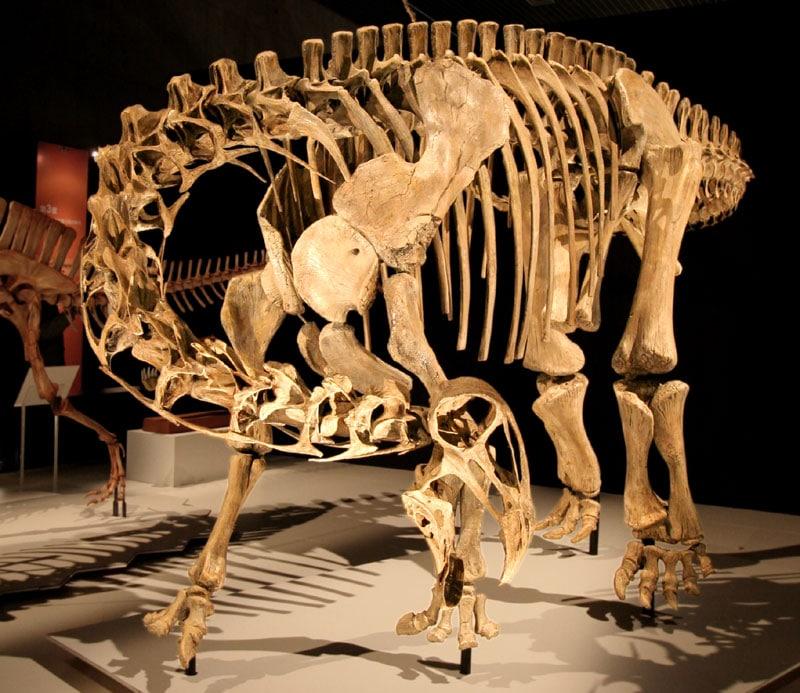In 2022, researchers found evidence for the first time that dinosaurs suffered from respiratory infections. It turned out that the ancient lizards endured the flu in the same way as we do today – cough, fever, runny nose. Hi-Tech is figuring out what else dinosaurs suffered from and whether it is similar to modern diseases.
Toothache, flu and cancer – even dinosaurs were afraid of getting sick with this.
Did dinosaurs get sick?
Yes, they hurt quite often. Researchers do not always have enough data to understand why a particular dinosaur died, but it is believed that most died from natural causes. Unfortunately, diagnosing the diseases that caused dinosaurs is difficult because their organs and soft tissues have not been preserved.
What hurt dinosaurs?
• Cancer
When scientists find dinosaur fossils, they are often in the shape of bones. Sometimes it is possible to detect traces of soft tissues – they are quite unusual and vague. There are several diseases that leave marks on the bones, one of them is cancer.
The researchers found the coccyx of a dinosaur with traces of two different bone tumors:
Scientists discovered the cancer when they examined a 90-million-year-old bone: they found a small, button-shaped bony protrusion on it. The authors decided to investigate the strange bump, which measured only 8.6 by 7.5 mm.
They found signs of two benign tumors. One of them is osteoma, a benign bone tumor. In most cases, it is not malignant. The other is a hemangioma, a harmless vascular tumor.
This discovery shows that dinosaurs develop tumors. For example, brachylophosaurus, gilmoreosaurus, bactrosaurus, and edmontosaurus, all duck-billed dinosaurs, have signs of hemangiomas. Various individuals of the genus Edmontosaurus also showed evidence of desmoplastic fibroma, a rare bone tumor, as well as osteoblastoma, bone cancer, and metastatic cancer.
Toothache
A well-preserved Tyrannosaurus Rex was diagnosed with osteomyelitis of the jaw – a purulent infectious and inflammatory process that captures all the structural components of the jawbone and leads to osteonecrosis.
Tristan Otto, an employee of the Natural History Museum in Berlin, during a general examination using tomography and X-ray technology, found out that there was a thickening on the left dentary. It extends to the root of one of the teeth. Further analysis confirmed that the dinosaur had neoplastic osteomyelitis, an infection of the bone.
Researchers believe that this disease affected the force of the dinosaur’s bite. Usually it is 35 thousand newtons. For comparison, the maximum human bite force is about 700 newtons.
Flu
The researchers found that dinosaurs survived the influenza pandemic 100 million years before they completely died out. Signs of a respiratory illness similar to the flu were found in the bones of Diplodocus.
Experts believe the disease has spread rapidly among the animals. She caused typical symptoms – cough, sneezing and fever, breathing problems, runny nose.
Scientists note that dinosaurs had air sacs in their bones that helped them breathe, which means that respiratory diseases could spread there.
So far, paleontologists do not know which microorganism caused flu-like symptoms. But it is assumed that it is similar to the one that affects modern birds and people.
Dinosaurs died from an infection?
Researchers do not believe that dinosaurs became extinct due to any kind of infection. First, dinosaurs that could not fly were a very diverse group of animals, they lived on several continents at once. Therefore, it is difficult to find a pathogen that would destroy such a diverse and widespread group of living beings.
Second, the often overlooked fact is that the Cretaceous and Paleogene extinctions didn’t just wipe out the dinosaurs, they wiped out at least 75% of all species on Earth. Not just dinosaurs, but a wide variety of plants, animals, and microbes on land and in the oceans, so the virus couldn’t do it.
The generally accepted hypothesis is the fall of an asteroid or comet on the territory of the present Yucatan Peninsula. Other researchers point to a powerful burst of volcanic activity in what is now India. As a result, a province was formed, which is called the Deccan Traps.
Studying the history of respiratory diseases will help to understand the characteristics and evolution of the microorganisms that cause the disease – this will improve our methods of dealing with them, as well as preventing mass infection. In addition, the disease can affect fossils preserved from different species. Some of them will contain signs of a past disease – studying their features will help experts learn more about the time in which this or that organism lived.









